Ciao a tutti! Oggi vorrei parlarvi di un argomento molto vicino al mio cuore—un Gruppo degli artisti italiani che hanno dipinto nell’ottocento. Si chiamano “i macchiaioli.”
Hello everyone! Today I would like to talk to you about a subject very close to my heart—a group of Italian artists who painted in the nineteenth century. They are called “the Macchiaioli.”
Quando ero una studentessa a Firenze sono andata al Palazzo Pitti dove si trova il museo di arte moderna. Era li dove ho visto per la prima volta l’opera dell’arte dei macchiaioli. Fin dall’inizio sono stata colpita dallo stile del loro arte che assomigliava molto agli impressionisti Francesi. Mi domandavo chi erano questi artisti italiani e perché non ne avevo sentito parlare fino ad allora.
When I was a student in Florence I went to the Pitti Palace where the museum of modern art is located. It was there where I saw the Macchiaioli artwork for the first time. From the very beginning, I was struck by the style of their art which closely resembled the French Impressionists. I wondered who these Italian artists were and why I hadn’t heard of them until then.
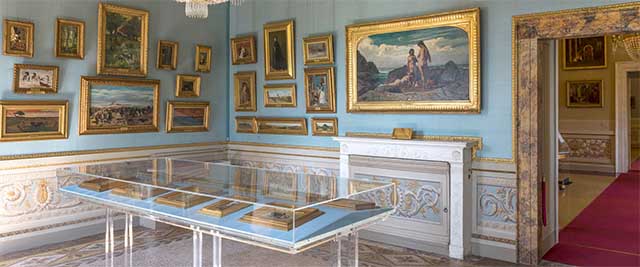
Avete mai visto quadri dipinti dei macchiaioli?
Have you ever seen paintings of the Macchiaioli?
Forse sì, forse no? Bene, state sintonizzati per scoprire un po’ di più di questi artisti.
Maybe yes maybe no? Well, stay tuned to find out a little more about these artists.
Sono Melissa e sono molto contenta che siate qui con me per imparare un po’ della storia di arte italiana e per praticare italiano con me. Come ho già detto i macchiaioli che assomigliano molto agli impressionisti francesi non hanno ricevuto lo stesso consenso internazionale.
I’m Melissa and I am very happy that you are here with me to learn a little about the history of Italian art and to practice Italian with me. As I already mentioned, the Macchiaioli who closely resembled the French Impressionists never received the same international acclaim.
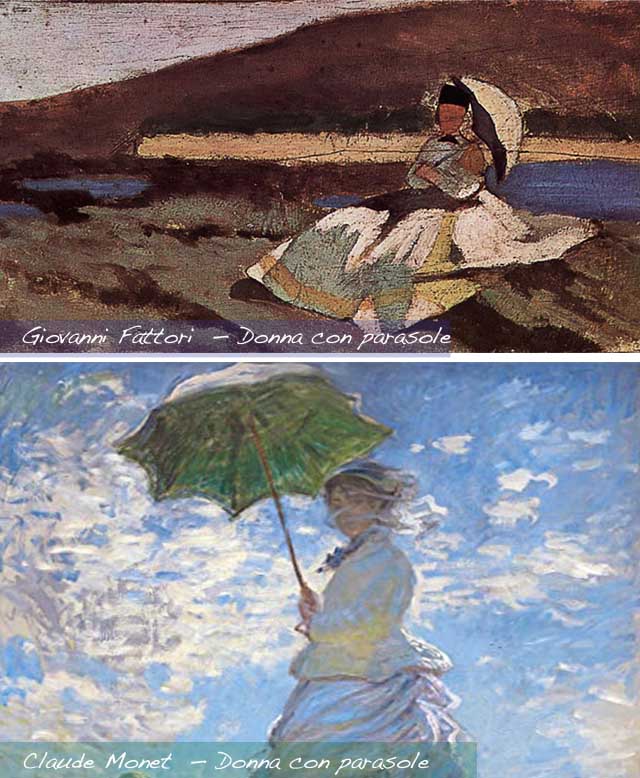
Come mai?
Come mai?
Diamo un’occhiata ai pittori Giovanni Fattori e Claude Monet per paragonare le due correnti artistiche dell’ottocento e scopriamo come l’invenzione della vernice in tubi ha cambiato il corso della storia dell’arte.
Let’s take a look at the painters Giovanni Fattori and Claude Monet and compare the two 19th century artistic movements and discover how the invention of paint in tubes change the course of art history.
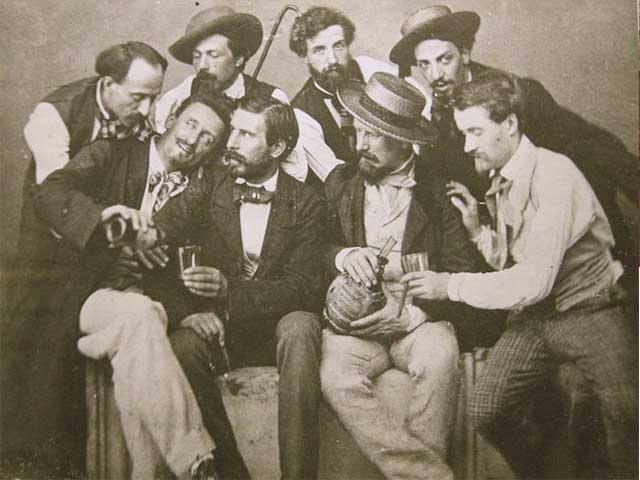
I macchiaioli furono un gruppo di pittori italiani che precederono gli impressionisti di dieci anni. Le due correnti artistiche sono spesso paragonate e ritenute simili. Ma gli impressionisti sono ben conosciuti in tutto il mondo, mentre i macchiaioli sono conosciuti molto di meno. Inoltre, qualche volta quando i due gruppi di artisti vengono rivisti insieme, l’opera dei macchiaioli viene trascurata e considerata “l’impressionismo fallito in Italia.”
The Macchiaioli were a group of Italian painters who preceded the Impressionists by ten years. The two artistic currents are often compared and considered similar. But the Impressionists are well known all over the world, while the Macchiaioli are known much less. Furthermore, sometimes when the two groups of artists are reviewed together, the work of the Macchiaioli is neglected and considered “the failed impressionism in Italy.”
All’inizio del ventesimo secolo i macchiaioli non erano nemmeno menzionati da noti storici dell’arte nei principali libri di storia dell’arte.
At the beginning of the twentieth century the Macchiaioli were not even mentioned by well-known art historians in the main art history books.
Ma è davvero una valutazione equa? Quali sono i motivi per cui i macchiaioli sono stati trascurati e quasi dimenticati?
But is it really a fair assessment? What are the reasons why the Macchiaioli were neglected and almost forgotten?
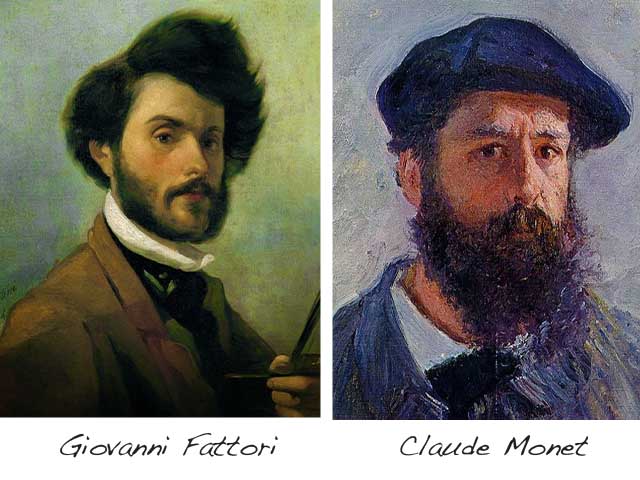
Per indagare su di queste domande, pensavo che sarebbe interessante confrontare e contrapporre le due correnti artistiche per vedere dove i macchiaioli e gli impressionisti sono simili e dove differiscono. A scopo di discussione, ho scelto dipinti di Giovanni Fattori, il capogruppo dei macchiaioli, e alcuni di Claude Monet, considerato il “padre” dell’impressionismo.
To investigate these questions, I thought it would be interesting to compare and contrast the two artistic currents to see where the Macchiaioli and the Impressionists are similar and where they differ. For discussion purposes, I chose paintings by Giovanni Fattori, the leader of the Macchiaioli group, and some by Claude Monet, considered the “father” of Impressionism.
Tenete in mente, che Fattori nacque nel 1825 (mille ottocento venticinque) ed aveva quindici anni più di Monet. La corrente artistica dei macchiaioli iniziò intorno al 1848 (mille ottocento quarantotto) e l’impressionismo iniziò nel 1866 (mille ottocento sessantasei.)
Keep in mind, that Fattori was born in 1825 (one thousand eight hundred twenty five) and he was fifteen years older than Monet. The artistic movement of the Macchiaioli began around 1848 (one thousand eight hundred forty eight) and impressionism began in 1866 (one thousand eight hundred sixty.)
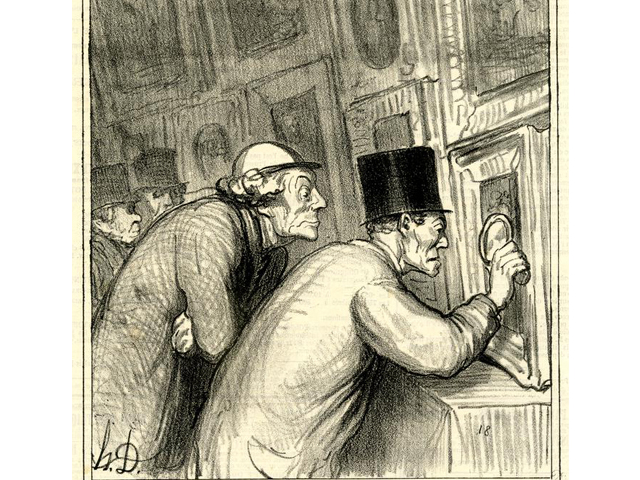
Cominciamo con una curiosa coincidenza.
Let’s start with a curious coincidence.
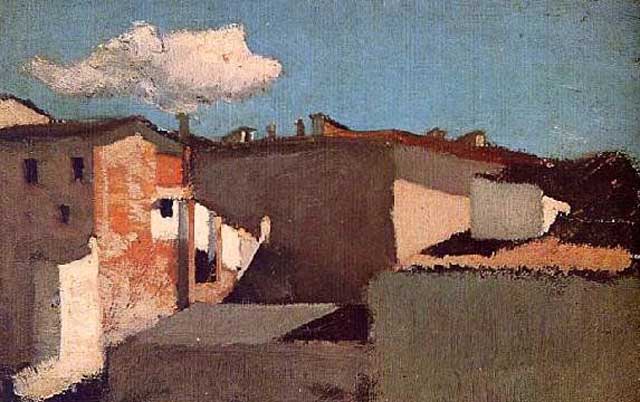
Sia i macchiaioli che gli impressionisti derivarono i loro nomi da commenti peggiorativi fatti su di loro dalla stampa. Nel caso degli italiani, il gruppo è stato nominato “macchiaioli” come insulto da un giornalista critic che lo scrisse sulla Gazzetta del Popolo, il 3 novembre mille ottocento sessantadue.
Both the Macchiaioli and the Impressionists derived their names from pejorative comments made about them in the press. In the case of the Italians, the group was named “Macchiaioli” as an insult by a critical journalist who wrote it in the Gazzetta del Popolo on November 3, one thousand eight hundred sixty-two.
Il termine significava che il loro lavoro era incompiuto poiché si credeva che gli artisti macchiassero casualmente la vernice sulle loro tele.
The term meant that their work was unfinished as artists were believed to randomly stain the paint on their canvases.
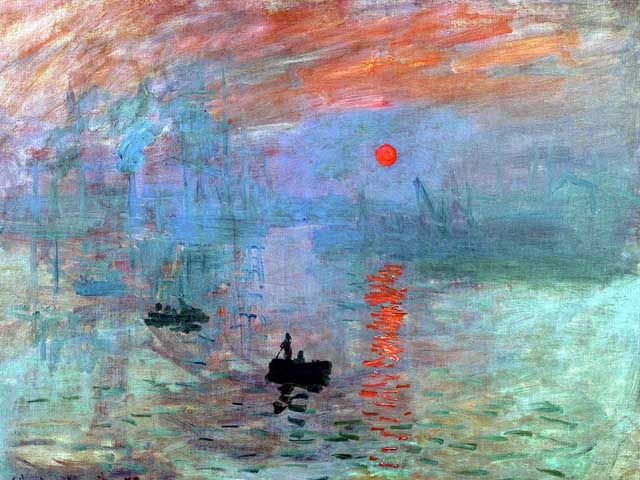
Nel caso dei francesi, loro hanno preso il nomignolo “impressionisti” da un giornalista sprezzante che dichiarò che il dipinto di Monet intitolato “Impressioni, Alba” era incompleto e lo paragonò negativamente alla carta da parati.
In the case of the French, they got the nickname “impressionists” from a contemptuous journalist who declared that Monet’s painting entitled “Impressions, Alba” was “unfinished” and compared it negatively to wallpaper.
Diamo adesso una rapida occhiata a come
gli artisti italiani e gli artisti francesi
hanno lavorato e le tecniche che hanno
utilizzato per rendere i loro dipinti.
Let’s now take a quick look at how Italian artists and
French artists worked and the techniques they
used to make their paintings.
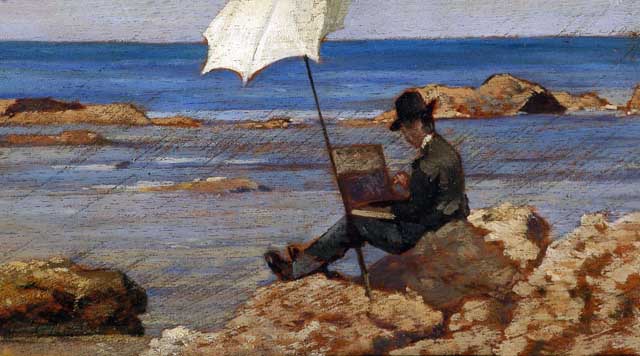
I macchiaioli dipingevano principalmente la campagna toscana e le scene che celebravano la vita quotidiana dei contadini e le loro attività semplici e normali. Sono meglio conosciuti per i piccoli e veloci schizzi di pittura che hanno realizzato all’aperto. Questo tipo di pittura è ora chiamato pittura plein-air.
The Macchiaioli mainly painted the Tuscan countryside and scenes that celebrated the daily life of the peasants and their simple and normal activities. They are best known for the small, quick sketches of paint they made outdoors. This type of painting is now called plein-air painting.
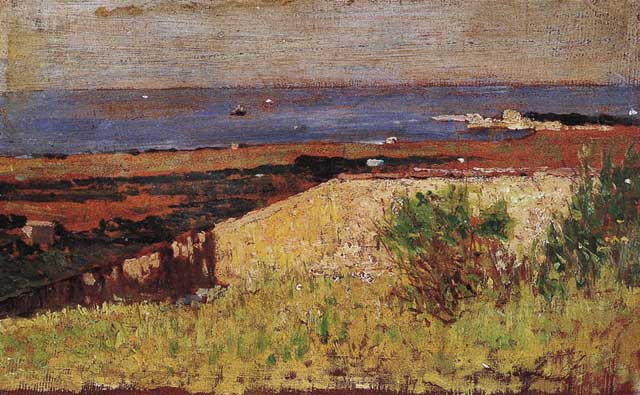
Giovanni Fattori ed i suoi compagni credevano che l’unico modo per realizzare una scena autentica fosse uscire nei campi e boschi per studiare il mondo naturale.
Giovanni Fattori and his companions believed that the only way to create an authentic scene was to go out into the fields and woods to study the natural world.
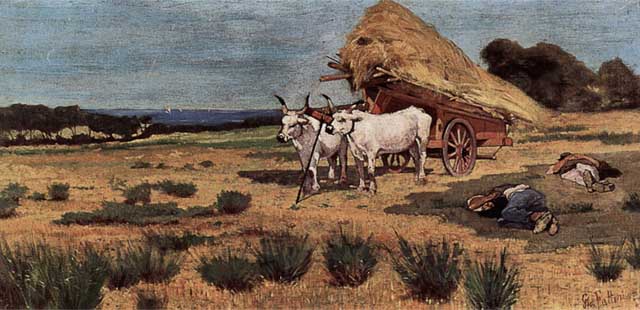
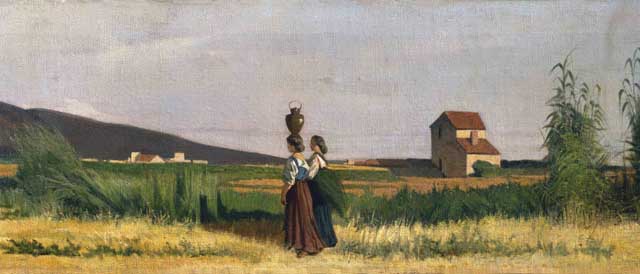
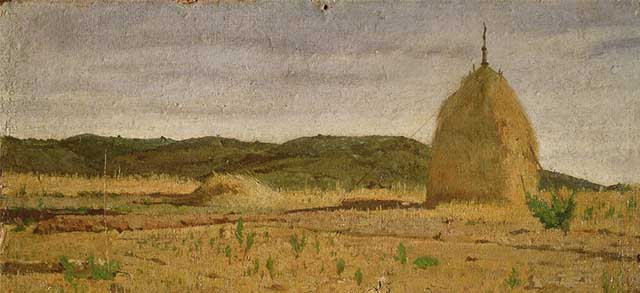
Giovanni Fattori scriveva di sé: “Sono un così scrupoloso osservatore della natura, che sin da giovane ho sempre studiato, e ho sempre portato con me un piccolo taccuino tascabile dove potevo prendere appunti, camminando e osservando tutto ciò che mi colpiva.”
Fattori wrote about himself: “I am such a scrupulous observer of nature, that I have always studied since I was young, and I have always carried with me a small pocket notebook where I can take notes, walk and observe everything that struck me.”
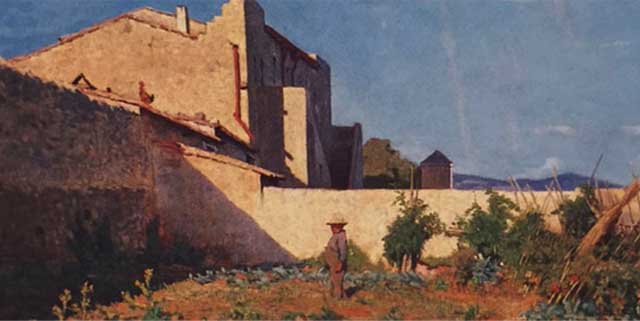
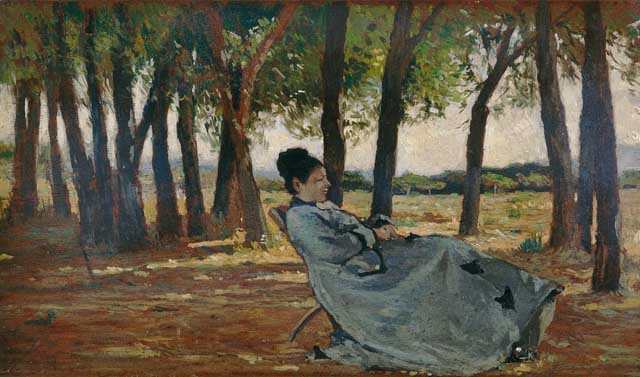
Essendo affascinati dal mondo naturale in cui si muovevano certo i macchiaioli avevano anche un’interesse speciale nella luce naturale. Per loro era molto importante registrare l’intenso chiaroscuro che era in continua evoluzione durante il giorno mentre il sole viaggiava attraverso il cielo. Per documentare rapidamente questi cambiamenti, gli artisti hanno sviluppato la tecnica pittorica di tamponare velocemente con colpi ruvidi di vernice.
Being fascinated by the natural world in which the Macchiaioli moved, they certainly had a special interest in natural light. For them it was very important to record the intense chiaroscuro that was constantly changing during the day as the sun traveled across the sky. To quickly document these changes, the artists developed a painting technique of quickly dabbing his canvases with rough strokes of paint.
Monet e gli impressionisti francesi erano
anche convinti che l’unico modo di
dipingere fosse lavorare all’aperto.
Monet and the French Impressionists were also convinced
that the only way to paint was to work outdoors.
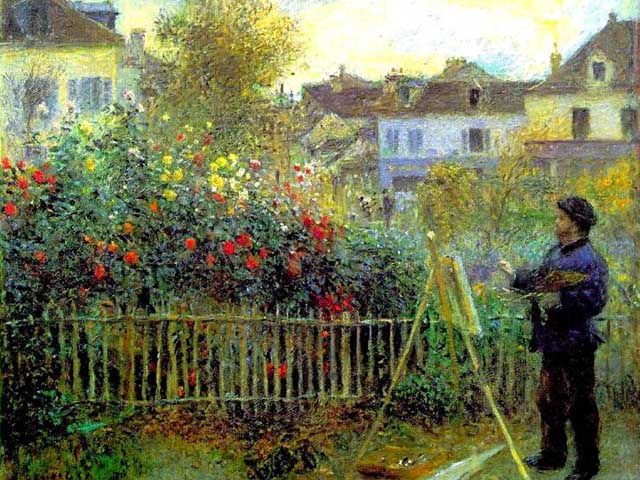
Sostenevano che solo nei campi, accanto il mare o nei giardini sarebbe stato possibile catturare la luce che passava velocemente e osservare bene la natura.
They argued that only in the fields, by the sea or in the gardens would it be possible to capture the light that passed quickly and observe nature well
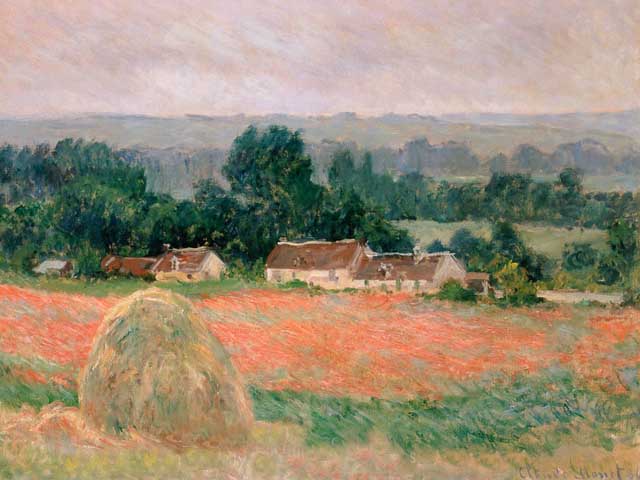
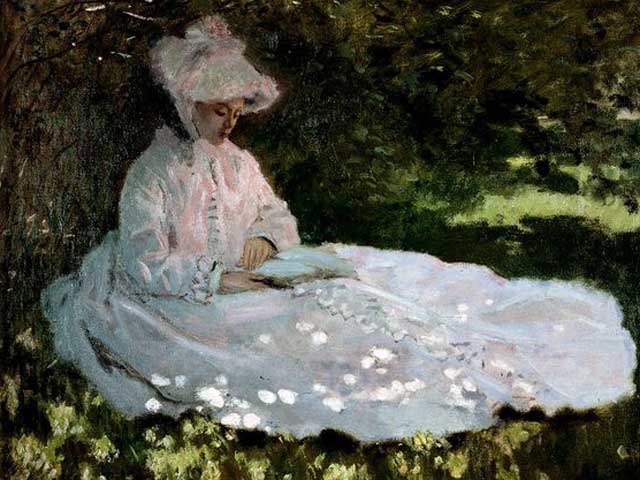
Una volta Monet ha detto: “La ricchezza che ottengo viene dalla natura, la fonte della mia ispirazione.”
Monet once said, “The wealth I get comes from nature, the source of my inspiration.”
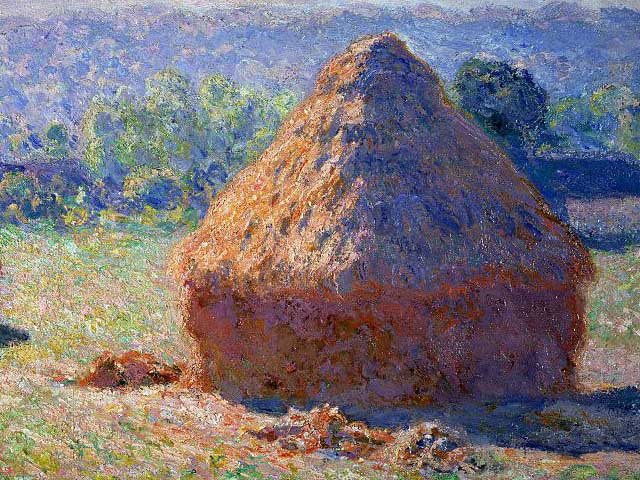
Come i macchiaioli, gli impressionisti hanno anche sviluppato una tecnica ruvida per applicare la vernice per catturare rapidamente l’essenza del soggetto piuttosto che ogni minimo dettaglio. L’obbiettivo era di registrare la luce e l’impressione di un oggetto, e non importava se le pennellate erano visibili. I colori sono stati applicati uno accanto all’altro con la minima miscelazione possible, invece gli occhi di chi guardava l’immagine, mescolavano i colori.
Like the Macchiaioli, the Impressionists also developed a rough technique of applying paint to quickly capture the essence of the subject rather than every little detail. The goal was to record the light and the impression of an object, and it didn’t matter if the brush strokes were visible. The colors were applied side by side with the minimum possible mixing, instead, the eyes of those looking at the image mixed the colors.
I macchiaioli e gli impressionisti si interessavano delle stesse tecniche e soggetti da dipingere.
The Macchiaioli and the Impressionists were interested in the same techniques and subjects to be painted.
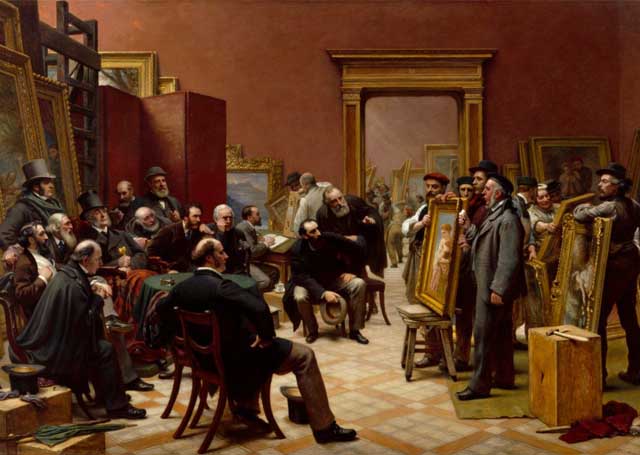
Consiglio della Royal Academy che seleziona le immagini per l’esposizione, 1875
Ispirati dalla natura e dai nuovi modi di fare arte, va da sé che entrambi i gruppi, sia i macchiaioli che gli impressionisti, volevano prendere le distanze dalle accademie d’arte che dettavano come gli artisti dovevano dipingere. Non si fidavano delle scuole che obbligavano gli artisti a seguire un programma predeterminato “basata su rigide regole” predicate dalle accademie di pittura.
Inspired by nature and new ways of making art, it goes without saying that both groups, both the Macchiaioli and the Impressionists, wanted to distance themselves from the art academies that dictated how artists should paint. They did not trust schools that forced artists to follow a predetermined “rule-based” program preached by the painting academies.
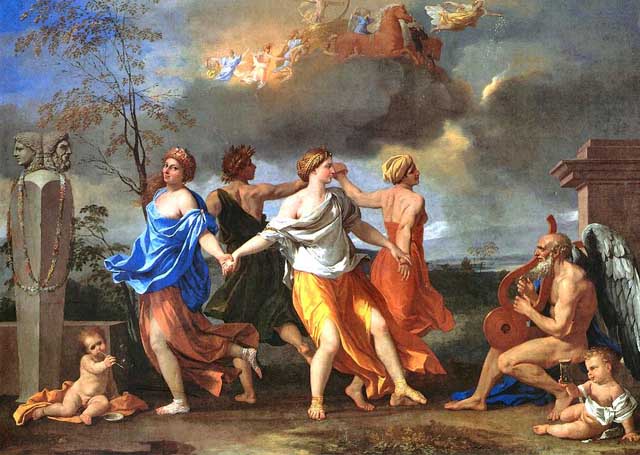
Quindi, si sono allontanati dalle accademie d’arte classiche e sono andati a trovare le loro strada. La reazione delle scuole e del pubblico non è stata favorevole e sono stati emarginati. Ma non glie ne importava. Erano stufi della pittura che erano legati alle idee intellettuali e volvevano staccarsi dai temi che si trovavano nelle allegorie e le storie classiche e dipingere invece semplici scene ordinarie con persone reali.
Hence, they moved away from classical art academies and went on to find their own path. The reaction of the schools and the public was not favorable and they were marginalized. But they didn’t care. They were fed up with a painting style that was related to intellectual ideas and wanted to break away from the themes found in allegories and classical stories and instead paint simple ordinary scenes with real people.
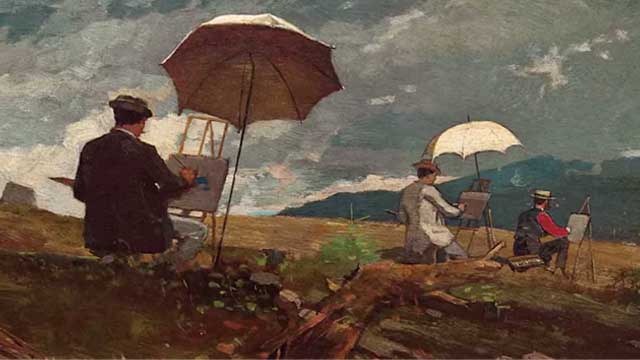
I macchiaioli e gli impressionisti sembrano condividere una visione d’arte molto simili, ma ci sono differenze che li contraddistinguono.
The Macchiaioli and the Impressionists seem to share a very similar vision of art, but there are differences that distinguish them.
Diamo adesso un’occhiata alle attrezzature e i metodi di lavoro che i macchiaioli e gli impressionisti usavano per svolgere il loro lavoro.
Let’s take a look at the equipment and working
methods that the Macchiaioli and the Impressionists
used to carry out their work.
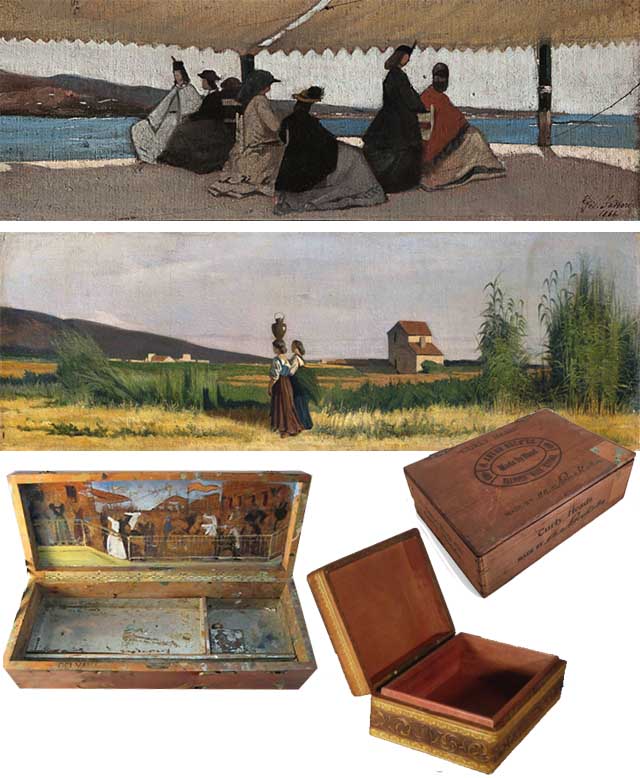
Per dipingere rapidi schizzi dei vasti orizzonti, i macchiaioli inizialmente preferivano dipingere su piccoli pannelli allungati. Presto hanno scoperto che i coperchi delle scatole di sigari, facilmente trasportabili, erano delle dimensioni perfette per iniziare le loro prime bozze. Ma, a causa dei limiti delle loro vernici appena preparate a mano e per evitare che i preziosi colori si seccassero, dovevano tornare nei loro studi per completare i loro quadri.
To paint quick sketches of the vast horizons, the Macchiaioli initially preferred to paint on small elongated panels. They soon discovered that the easily portable cigar box lids were the perfect size to start their first drafts. But, due to the limitations of their freshly hand-prepared paints and to prevent the precious colors from drying out, they had to go back to their studios to complete their paintings.
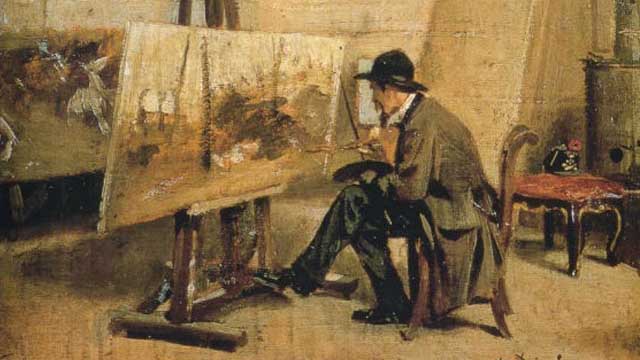
Gli impressionisti invece beneficiarono di nuove innovazioni nelle vernici che potevano essere acquistate in tubi. Questo li liberò dalla tradizionale macinazione manuale dei pigmenti. Perché le vernici nei tubi non si asciugavano molto velocemente gli artisti erano in grado di dipingere all’aperto per periodi più lunghi.
The Impressionists on the other hand benefited from new innovations in paints that could be bought in tubes. This freed them from the traditional manual grinding of pigments. Because the paints in the tubes didn’t dry very fast, the artists were able to paint outdoors for longer periods.
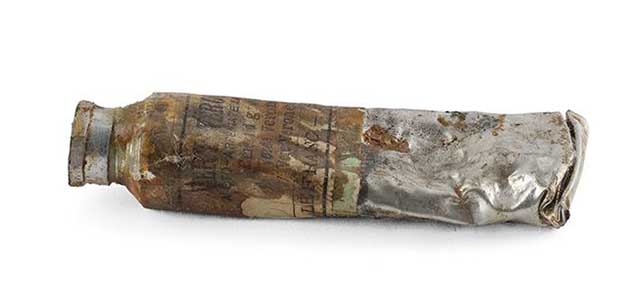
Attenzione! Questo è un sviluppo molto importante!
Listen up! This is a very important development!
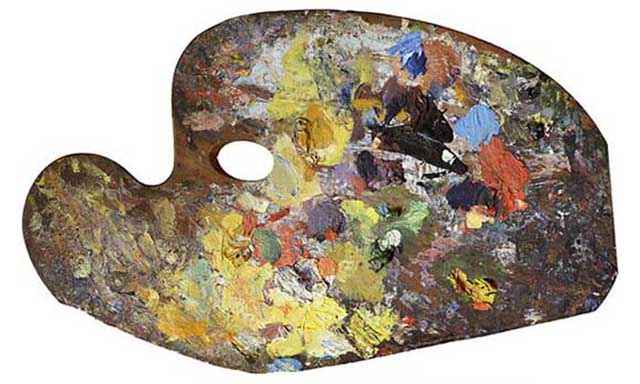
Fino a quel momento, i colori ad olio e il modo in cui venivano preparati erano rimasti immutati dal Rinascimento. Poiché i colori ad olio richiedevano molto tempo per la produzione e si asciugavano rapidamente, gli artisti si preparavano solo pochi colori con cui lavoravano durante una sessione di pittura.
Until that moment, oil paints and the way they were prepared had remained unchanged since the Renaissance. Because oil paints took a long time to produce and dried quickly, artists only prepared a few colors that they worked with during a painting session.
Ma con i rivoluzionari tubetti di vernice e i nuovi colori inventati dai chimici industriali nell’ ottocento in Francia—come il giallo cromo e il verde smeraldo—gli impressionisti avevano un’intero arcobaleno di colori nuovi con cui potevano giocare per ore e ore. A causa di questi progressi nella tecnologia della pittura, gli impressionisti sono diventati un po’ più audaci con le loro scelte cromatiche.
But with the revolutionary paint tubes and new colors invented by industrial chemists in the 19th century in France—such as chrome yellow and emerald green—the Impressionists had a whole rainbow of new colors that they could play with for hours on end. Due to these advances in painting technology, the Impressionists became a little bolder with their color choices.
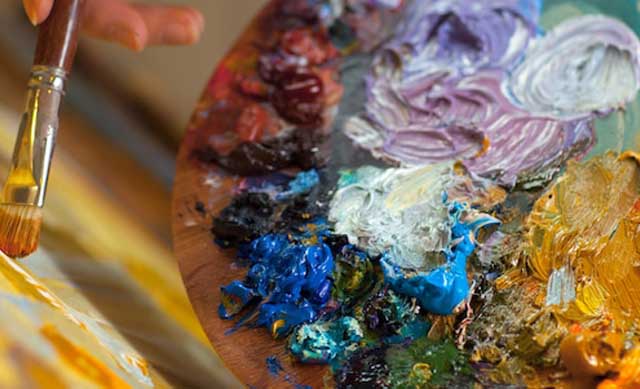
Esplorando l’uso dei colori puri, sono arrivati al punto di rimuovere completamente il colore nero dalle tavolozze. Di conseguenza, i loro dipinti erano atmosferici e le forme non erano delineate da linee rigide. Per di più i loro quadri conservavano la spontaneità della pittura all’aperto ed erano abbelliti dai nuovi colori vivaci nuovamente disponibili.
By exploring the use of pure colors, they came to the point of completely removing black from palettes. As a result, their paintings were atmospheric and the shapes were not outlined by hard lines. In addition, their paintings retained the spontaneity of outdoor painting and were embellished with the new bright colors available again.
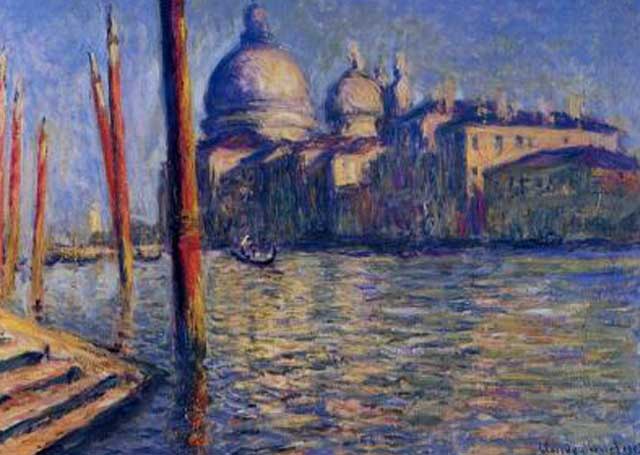
I macchiaioli, invece, come ho già detto, dopo aver finito il primo schizzo dalla natura erano costretti a tornare nei loro studi per rifornire le tavolozze per finire i quadri. A causa di questo, le loro pitture hanno perso la freschezza che gli artisti cercavano all’aperto. E non hanno mai pensato a rimuovere totalmente la vernice nera dalle loro combinazioni di colori. Come risultato il tono generale dei loro quadri è scuro e pesante e le immagini hanno contorni scuri.
The Macchiaioli, on the other hand, after having finished the first sketch from nature, were forced to return to their studios to replenish the palettes to finish the paintings. Because of this, their paintings may have lost the freshness that artists sought outdoors. And they never thought about totally removing black paint from their color schemes. As a result, the overall tone of their paintings is dark and heavy and the images have dark outlines.
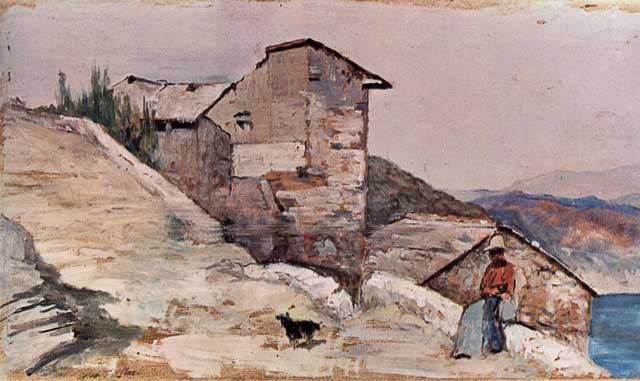
Altre differenze tra i due movimenti includono le opinioni sociali e politiche dei membri di ciascun movimento che hanno fondamentalmente influenzato il tono e il sentimento della loro arte.
Other differences between the two movements include
the social and political views of the members of each movement which fundamentally influenced the tone
and sentiment of their art.
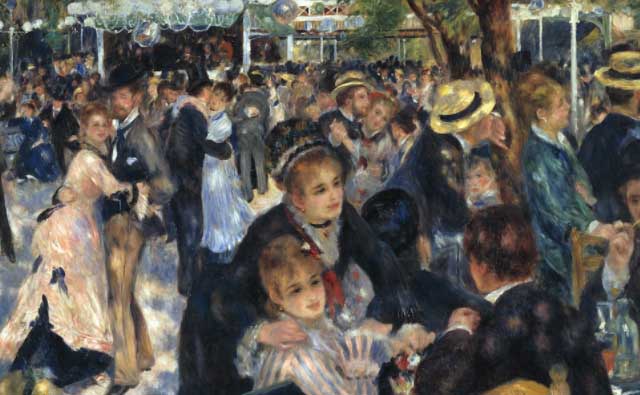
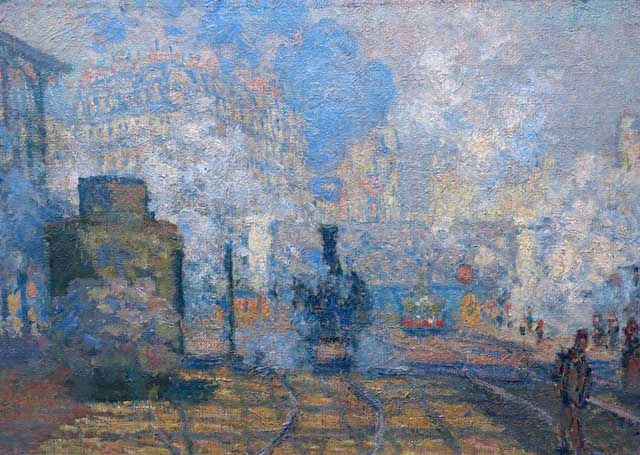
Gli impressionisti Francesi provenivano da una società borghese e industrializzata e hanno accettato facilmente i cambiamenti sociali. I loro dipinti tendevano a rappresentare scene più leggere di progresso urbano e intrattenimenti in città e in campagna.
The French Impressionists came from a society that was bourgeois and industrialized and for them it was easy to accept social changes. Their paintings tended to depict lighter scenes of urban progress and entertainment in the city and in the countryside.
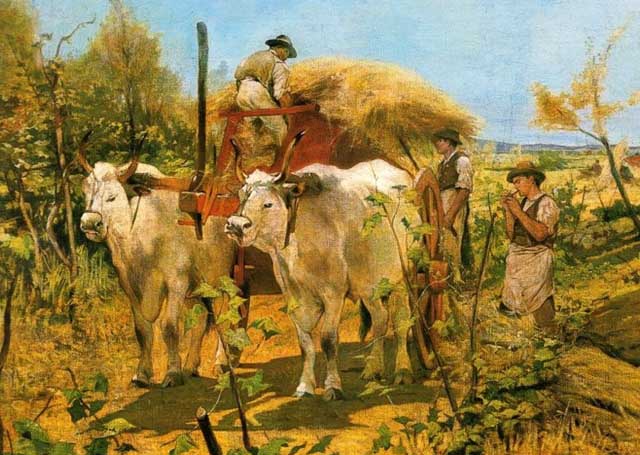
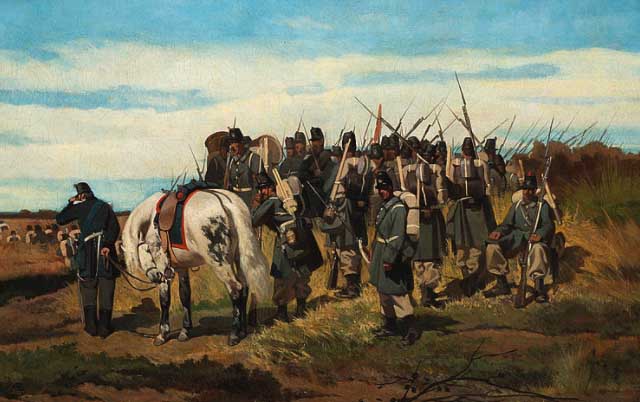
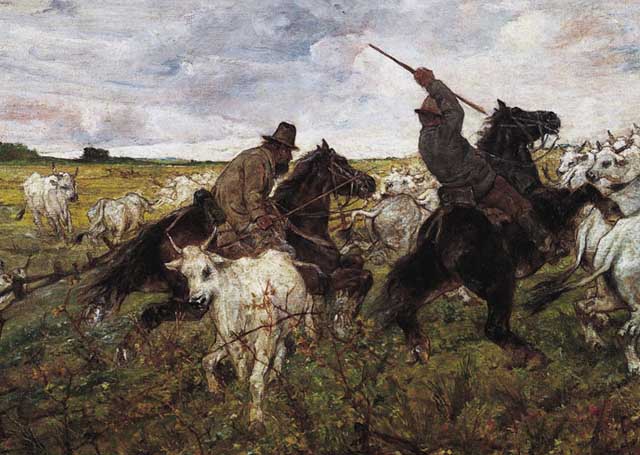
I membri dei macchiaioli, invece, hanno sempre tenuto i principi del risorgimento cioè opinioni forti sull’unione del paese, l’orgoglio nazionale, la celebrazione della cultura contadina, e l’apprezzamento dei valori tradizionali. Le loro convinzioni politiche hanno colorato i loro atteggiamenti e i dipinti lo riflettevano.
The members of the Macchiaioli, on the other hand, held on to the principles of the Risorgimento, that is, strong opinions on the union of the country, national pride, the celebration of peasant culture, and the appreciation of traditional values. Their political beliefs colored their attitudes and the paintings reflected that.
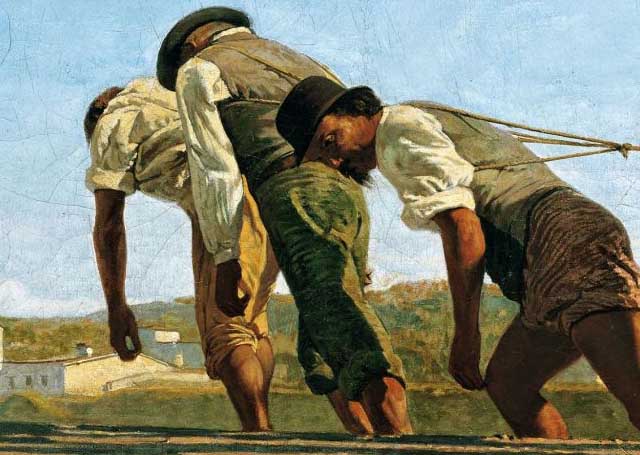
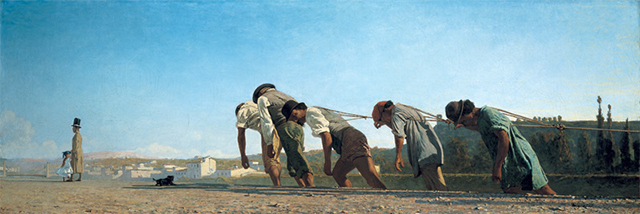
Inoltre, invece di essere allevati da famiglie della classe medio-alta, provenivano da una classe contadina laboriosa e povera. Quindi, le immagini dipinte dagli italiani non condividevano l’allegria dell’umore, o la gioia di vivere trasmessa nell’arte degli impressionisti Francesi.
Also, instead of being raised by upper-middle-class families, they came from a hardworking and poor peasant class. Therefore, the images painted by the Italians did not share the cheerfulness of humor, or the joie de vivre conveyed in the art of the French Impressionists.
Sia i macchiaioli che gli impressionisti sconvolsero la scena artistica nell’ottocento, quindi perché un movimento è diventato famoso e ben conosciuto in tutto il mondo e non l’altro?
Both the Macchiaioli and the Impressionists shook
the art scene in the nineteenth century, so why
did one movement become famous and well known
throughout the world and not the other?
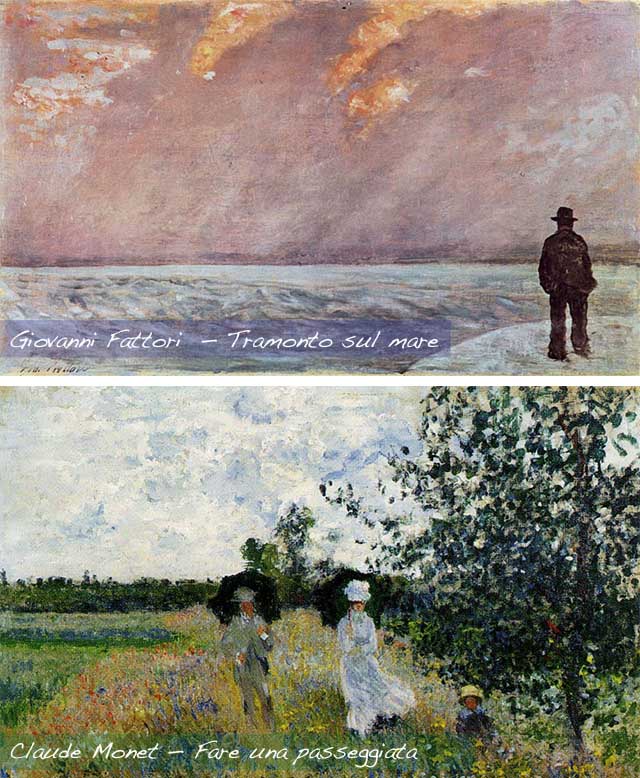
La ragione è principalmente dovuta al fatto che l’arte dei macchiaioli non ha mai raggiunto il ricco mercato americano e quindi un pubblico più ampio. Invece, la maggior parte della loro opera è stata tenuta privatamente e non esposta.
The reason is mainly due to the fact that the art of Macchiaioli never reached the rich American market and therefore a wider audience. Instead, most of their work was held privately and not put on display.
Inoltre, un altra ragione da considerare… dopo la seconda guerra mondiale, a causa del forte nazionalismo italiano di Mussolini che avvolse il paese per anni—un principio non esattamente lo stesso ma simile a cui i macchiaioli si erano identificati—la loro arte fu respinta dalla nazione.
Also, after World War II, due to Mussolini’s strong Italian nationalism that enveloped the country for years—a similar principle with which the Macchiaioli identified themselves—their art was rejected by the nation.
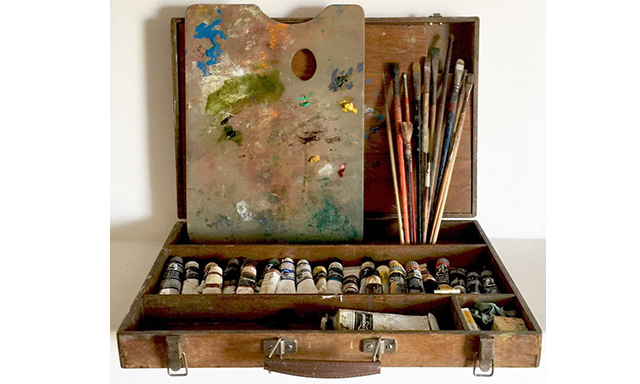
Finalmente, con le vernici prefabbricate in tubi, facili da acquistare, gli impressionisti avevano un vantaggio straordinario che non esisteva per i macchiaioli.
Finally, with pre-fabricated paints in tubes, easy to buy, the Impressionists had an extraordinary advantage that did not exist for the Macchiaioli.
Infatti, Pierre-Auguste Renoir ha detto: “Senza i colori nei tubi, non ci sarebbero stati Cézanne, Monet, Pissarro e l’impressionismo.
Indeed, Pierre-Auguste Renoir said: “Without the colors in the tubes, there would have been no Cézanne, Monet, Pissarro, and Impressionism.
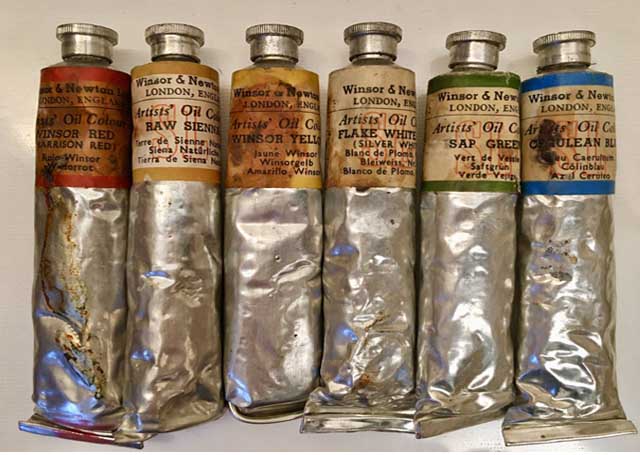
Anche se i Macchiaioli non sono più
conosciuti fuori Italia, tuttavia, gli artisti
italiani hanno lasciato il segno‚ o
la loro “macchia” sulla storia dell’arte.
However, the Macchiaioli left their mark‚
or their” stain “on the history of art.
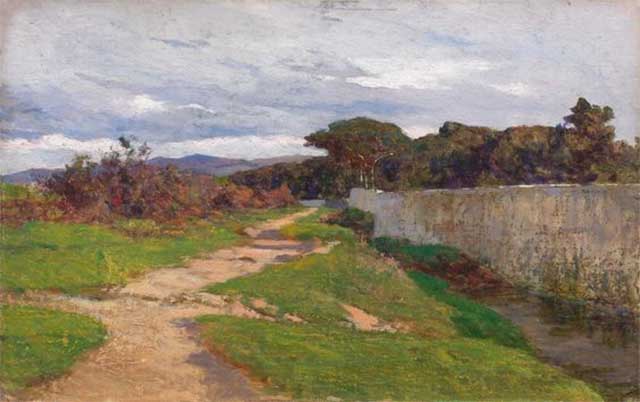
A metà dell’ottocento lo stile dei macchiaioli sembrava moderno a un pubblico italiano rispetto ai movimenti tradizionali che gli italiani avevano visto in precedenza. I macchiaioli che hanno abbracciato la pittura Plein-air, hanno sconvolto la scena pittorica italiana sviluppando la tecnica “macchia.” Questo modo di dipingere, che ha rispinto le tradizionali tecniche di pittura accademica, gli ha permesso di catturare la luce naturale e l’immediatezza del momento.
In the mid-nineteenth century, the Macchiaioli style seemed modern to an Italian audience compared to the traditional movements that Italians had seen previously. The Macchiaioli who embraced Plein-air painting shocked the Italian pictorial scene by developing the “stain” technique. This way of painting, which rejected traditional academic painting techniques, allowed them to capture the natural light and immediacy of the moment.
Quindi il movimento dei macchiaioli non dovrebbe essere trascurato, ma dovrebbe essere considerato coraggioso e idealista—una corrente artistica che ha contribuito a spostare l’arte italiana in una nuova e più moderna direzione. Ma, alla fine, i macchiaioli non erano così progressisti o sperimentali come gli artisti Francesi che sono arrivati pochi anni dopo. A differenza dei francesi gli italiani non hanno continuato a spingersi oltre ai limiti artistici
So the Macchiaioli movement shouldn’t be overlooked, but it should be considered courageous and idealistic — an artistic current that has helped move Italian art in a new and more modern direction. But, in the end, the Macchiaioli were not as progressive or experimental as the French artists who arrived a few years later. Unlike the French, the Italians did not continue to push beyond the artistic limits.
O magari era solo una questione di essere nel posto giusto, al momento giusto, con le attrezzature giuste.
Or maybe it was just a matter of being in the right place, at the right time, with the right equipment.
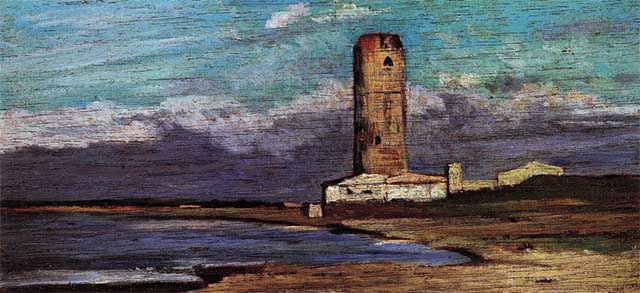
Insomma…. chissà cosa sarebbe cambiato se i macchiaioli avessero avuto a disposizione le vernici prefabbricate in tubi!
In conclusion…. who knows what would have changed if the Macchiaioli had had prefabricated tube paints available!
Allora… ragazzi…. questo è tutto per oggi! Spero di avervi ispirati e incuriositi dal mondo dell’arte. Vi invito di cliccare sul link nella descrizione per trovare le trascrizioni sia in italiano che in inglese. Fatemi sapere che ne pensate nel comment box sul sito del blog.
So… guys…. that’s all for today! I hope I have inspired and intrigued you by the art world. I invite you to click on the link in the description to find the transcriptions in both Italian and English. Let me know what you think in the comment box on the blog site.
Vi ringrazio per avermi ascoltato e di aver partecipato in questo puntata presentata dalla Studentessa Matta.
Thank you for listening and participating in this episode presented by the Studentessa Matta.
Ci vediamo e ci sentiamo nel prossimo episodio. Statemi bene. Ciao!
We will see each other soon in the next episode. Stay well!
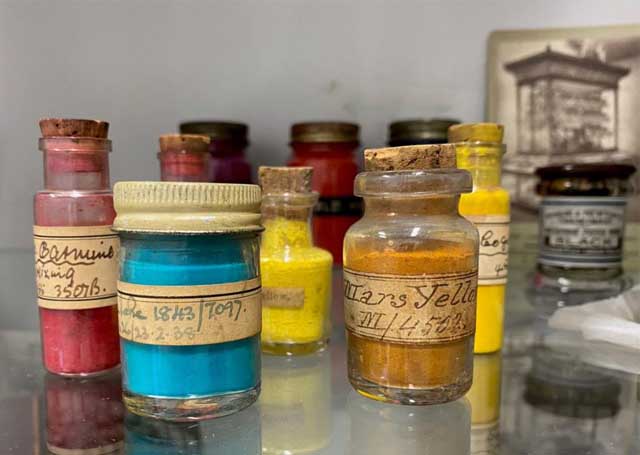
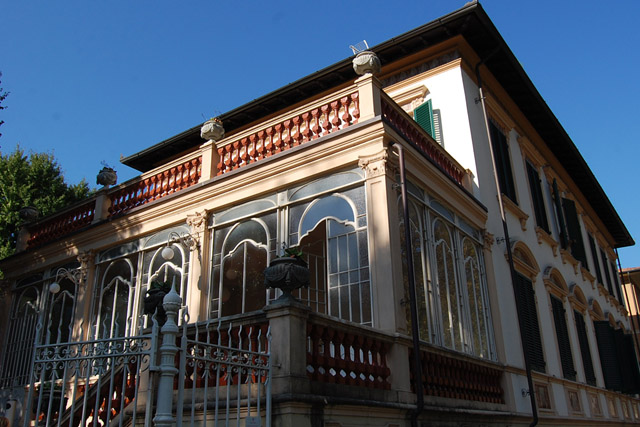
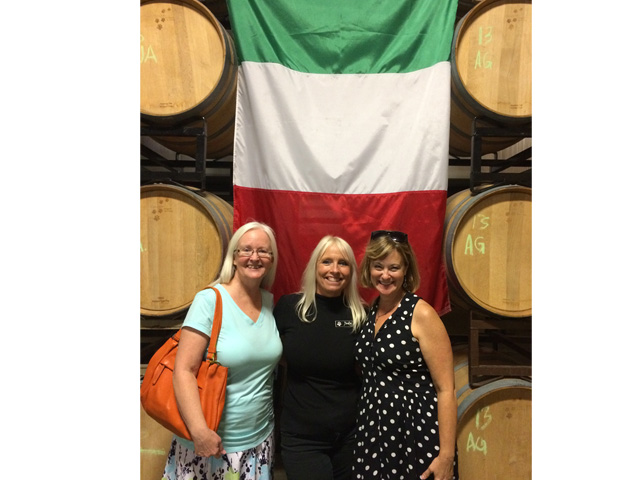


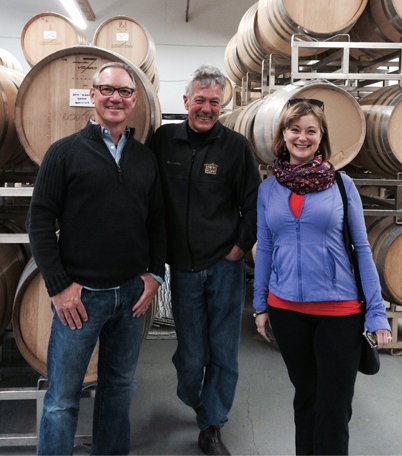
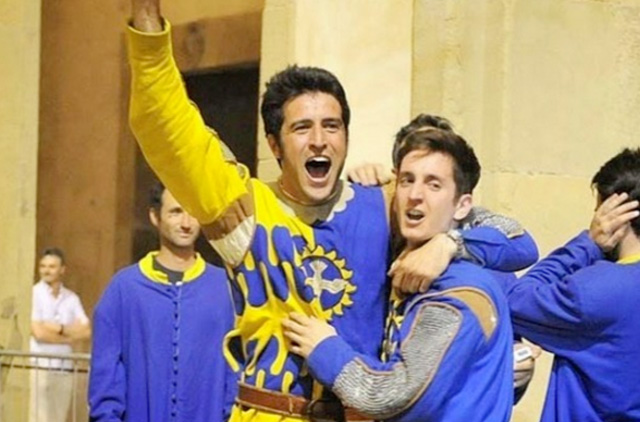






Ti ringrazio 🙏 per la lettura recente dimostrare fra l’arte di Macchiaioli e gli Impressionisti di francese nell’ ’
ottocento,
Sono interessante , non ho mai sentito prima dell’ arte Macchiaioli d’Italia, quindi non vedo l’ora di rivisitare alla galleria a Firenze per vedere questi immagini …
Caro saluto,
Interesting presentation – thank you. I understand that oil paint in tubes was an American invention – might you know when they became available in Italy? Also, which colours were commonly used by I Macchiaioli? Thank you again.